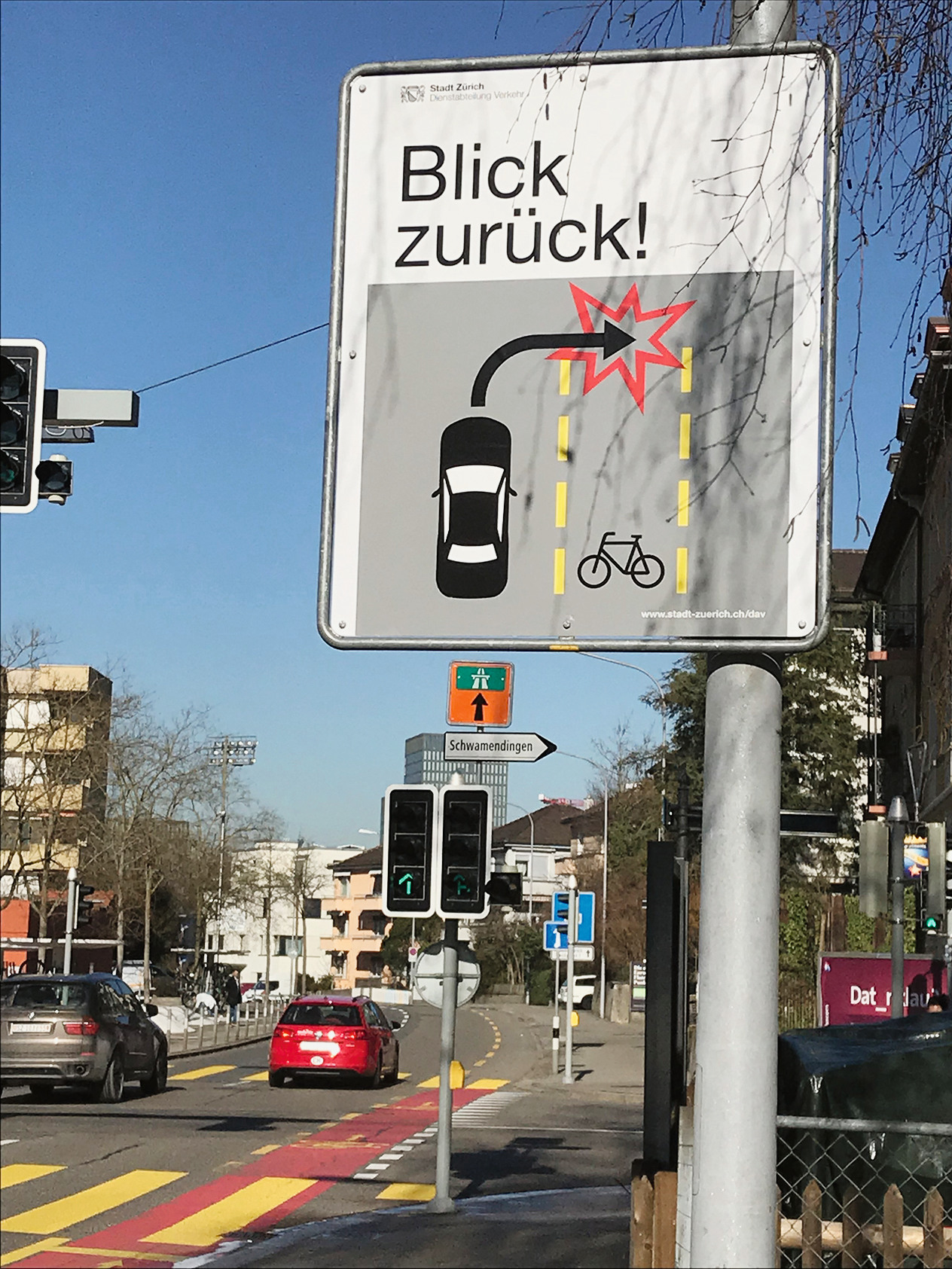Defuse neuralgic accident hotspots
The bicycle, whether with or without electric motor, is booming - unfortunately, parallel to this, the number of accidents is also increasing. "More serious injuries and deaths among two-wheeled cyclists" is the current conclusion. The city of Zurich, with its many bikers, is taking steps to make cycling safer.

Once again, the ambulance service of Schutz & Rettung Zurich and an emergency doctor had to be called out: "According to current information, a 56-year-old man was riding his electric bike shortly before 06:30. For reasons still unknown, he fell at the height of the property Pfingstweidstrasse 31 in the city of Zurich, suffered severe head injuries and remained unconscious." Such police reports of cyclists involved in accidents are unfortunately not uncommon and, according to forecasts, they are continuing to increase. Because the means of transportation on two wheels is in vogue.
Changed mobility behavior leads to more accidents
A look at the recently published Traffic accident statistics 2018 in the canton of Zurich shows an overall decrease compared to 2017. But the picture is deceptive: on a five-year average, more people were seriously injured and killed in the canton last year. While 22 people died in road traffic accidents in the most populous canton in 2016/17, the number skyrocketed to 33 fatalities in 2018. The Zurich Cantonal Police explain this unfortunate development as follows: Last year's prolonged period of good weather boosted two-wheeler sales and extended the season. This led to more traffic with an increased risk of accidents. For example, the cantonal police show in their statistics that in 2018, already in April and October, an above-average number of seriously injured two-wheeler drivers resulted from this in a three-year comparison.
But the nice weather is only one reason. The cantonal police also speak of a change in mobility behavior. A trend can be observed that both in leisure time and on the way to work, two-wheelers are increasingly used instead of cars or public transport - with corresponding accident figures (see also graphic).
A look at the age groups shows that it is no longer only 60- to 64-year-olds who are strongly affected by serious bicycle accidents. Increasingly, the age group 45 and older is also included.
What measures does the canton take?
The current accident statistics call for more road safety. The cantonal police have come up with three measures:
Repressive measures: To combat serious accidents, he said, it is essential to continue to focus police repression on the main causes of accidents, such as distraction (cue cell phone), impaired driving and speed.
Preventive measures: There is still a need for action here in the area of the senior age group; e-bike and pedestrian accidents are mentioned in particular. A corresponding campaign has already been running since 2015 (see www.weniger-senioren-unfälle.ch). Based on the latest results, it will be examined whether the two-wheeled age group 40+ needs to be made more aware.
Infrastructure Improvements: The cantonal police want to analyze the accident situation in detail and defuse weak points consistently and at an early stage with traffic orders and/or structural measures.
The city relies on "Velo Sicuro
Especially in urban areas, the bicycle - with or without electric drive - is popular, because with the two-wheeler you can travel fast. But cyclists live dangerously. However, the police estimate that around 60 percent of all serious accidents involving two-wheelers are self-inflicted.
"More than twice as many cyclists involved in accidents than seven years ago," says the Zurich city police regarding the latest accident statistics.
For the transport department of the city on the Limmat, it is clear that the problem is partly due to the inadequate infrastructure; it is not keeping pace with the bicycle boom. In this context, Wernher Brucks, head of the city's traffic safety department, points to the city's strategic cycling priorities. The project is called "Velo Sicuro" and provides for various optimizations.
The first measure is the "rehabilitation of bicycle accident hotspots", analogous to the "Black Spot Management" of the Federal Roads Office. Frequent accident locations must be identified and then remediated. Head of Traffic Safety Brucks speaks of around 30 neuralgic points that show an accumulation of two-wheeler accidents in urban areas. They are to be defused, which mostly requires structural measures.
Another point of "Velo Sicuro" is the inspection: About 30 signalized bicycle routes lead through the city area today. However, these are not always optimal in terms of safety and show potential for improvement. These bicycle paths are to be checked and, where necessary, renovated. Improving is one thing, but paying attention to safety from the start is another: Road construction projects should therefore be checked more for their bicycle safety.
Lighthouses are still missing
Lighthouse projects as well as immediate measures are also part of the urban safety project for bikers. The latter have already been implemented. These are smaller structural and operational interventions. For example, those responsible have added markings to an underpass near the Altstetten train station (see photo above), because the wall has been the undoing of one or two bikers.
The announced lighthouses are nowhere to be found in the (bicycle) city of Zurich - to date, they exist only on paper. The project is only at the beginning, according to the media spokesperson of the transport department. In order to be considered a lighthouse project, it must be a novel or exceptional problem-solving approach. Zurich's cyclists are eagerly waiting until the first ones are realized. Hopefully not for too much longer, because lighthouse projects are role models - especially for other cities and communities.











